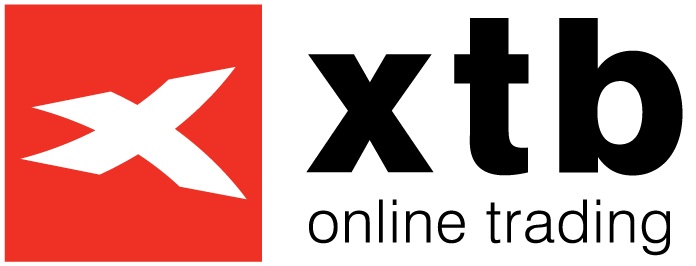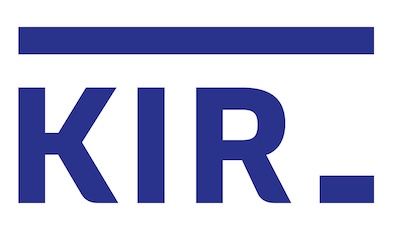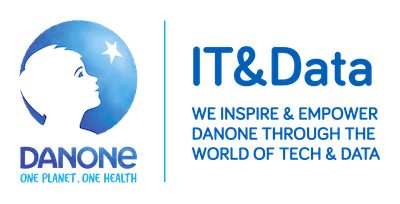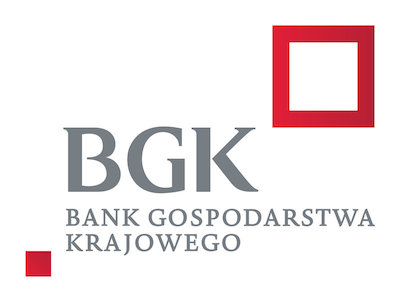
Polish
IT Community Report
2022
New data available in our Polish IT Community Report 2024.
What you can learn?
Demography and profile
Share

Gender
It is estimated that the IT market will grow by 4.8% in 2021-2026. Despite diversity sourcing actions and a "crawling revolution" as in 2021, only 14% of the IT workers are women. We remind you that from a business perspective, diversity within a company is extremely important – research shows that it affects the ability to adapt to a changing marketplace and the financial performance of companies.
Male
Female
Non-binary

Share

Age
People in the 25-30 age group are the largest percentage group in IT - they represent approximately 34% of the IT market. The demographic decline, and consequently the smaller number of computer science students, are also making their presence known, but the group entering the market remains at around 16%.
18 - 24
25 - 29
30 - 34
35 - 39
40+

Place of residence
Respondents living outside the city indicated the nearest city
Despite the pandemic time, up to 84% of IT workers can work remotely (more data in the "working conditions" category), their place of residence has not changed. The results here are very similar to what we saw the previous year.

Education
Approximately 73% of respondents have completed a college degree. This is consistent with what we have observed in previous years. Most respondents completed their education at the master's level.

Share

Fields of study - those who have completed their education
The vast majority, or as many as 85% of respondents, chose computer science or science field of study. This shows us how many people are orienting their education to the IT field from the very beginning, and how many professionals have decided to rebrand in a different direction.
Computer science
Other technical / science
Non-technical

Share

Fields of study - current learners
In 2021, there was a 13.6% interest in non-technical fields of study among our respondents in the IT industry, while already in 2021, we see a decline of 9 percentage points. This means that students are aware of the needs of the market and an increasing number of people are planning their future with the IT industry.
Computer science
Other technical / science
Non-technical

IT specializations
Programmers are the largest group among IT professionals. In the detailed report, you will see that among them are mainly Backend Developers. We see that in comparison to last year, more Admins/DevOps and 3 percentage points less testers participated in this edition of the IT Community Report.

Share

What type of company do you work for?
We are pleased to see that Polish companies still have the advantage, employing 54% of those surveyed. In recent years, more and more international brands are opening their branches in Poland, so we expect that the labor market may be dominated by companies with foreign capital.
For a Polish company
For a foreign company with a branch in Poland
For a foreign company that does not have a branch in Poland

Registered office
If a company has multiple locations, respondents reported the branch they come under
As in the case of place of residence of IT employees, Warsaw dominates in the location of company headquarters with the result of 31%. This means that some employees have either always worked in the Warsaw area or have decided to relocate.

Share

What type of software do you work with?
In 2021, the largest number of IT employees (72%) are employed by companies that outsource IT services to other entities. Both in the model of a ready-made project and subscription solutions.
For an external customer
Sold as a product or service
For the internal needs of the company I work for

Share

Software type vs company size
Companies that outsource services and products or work for external companies usually have between 50 and 200 employees, while giants with more than 10,000 employees mainly employ IT specialists for their own needs.

Experience level
This year we added new categories above the senior level, and we can see that this was a good decision, as over 10% of the respondents are such people. We also have noticed a slight rebound (+3%) among juniors, which means that the market has already adjusted to the pandemic situation and training has started again.

Role vs years of experience
The most experienced employees are IT Architects who have been in the industry for over 12 years. Due to the growth in demand for Data Science, Machine Learning, and AI specialists, we detailed a new role in the 2021 report in which employed report respondents have already worked for an average of about 3.5 years.

Gender, years of experience and seniority level
Statistically, women gain the necessary experience and skills to move to the next level in the career ladder faster than men.
Male
Non-binary
Female

Zarobki w IT
Share

Form of cooperation
Despite the belief of many people that it does not pay to work in IT on an employment contract, it is the prevailing form of employment. However, over the years we see that B2B is actually slowly gaining popularity.
Employment contract
B2B contract
Contract of mandate / contract for specific work

Share

Salary vs experience
Employment Contract, Contract of mandate, contract for specific work - amount “take home”; B2B - net on the invoice
It turns out that senior / C-level / team lead positions are more likely to be hired on a B2B contract. But the salary difference between these job levels is only 1,800 net on the invoice. The biggest spike in salary was noted when you were promoted from a junior to a mid position, since the salary almost doubled.

Share

Salary vs specialization
Employment Contract, Contract of mandate, contract for specific work - amount “take home”; B2B - net on the invoice
For the second year in a row, IT Architect is the highest paid profession in the industry. IT Administrators and DevOps professionals saw the smallest increases in B2B rates compared to the rest of the specialties for 2021.

Share

Salary vs city
Employment Contract, Contract of mandate, contract for specific work - amount “take home”; B2B - net on the invoice
Specialists employed in Warsaw are still among the top earners compared to other large cities. However, it's also worth mentioning that there are higher "living" costs naturally occurring in state capitals. Comparing the data from the previous year, we note an average difference in salary with an increase of about 700 PLN net with the employment contract. In 2021, the city with the lowest earnings in IT was Lublin. However, even there, salaries increased on average by PLN 500 net.

What about working remotely for a comapny from another city? Check out the newest IT job offerst that match you. No headhunters involved.
Share

Salary vs company size
In B2B and employment contracts, employees of large corporations with more than 10,000 employees and freelancers are top paid. In case of contracts of mandate / contracts for specific work, the highest salaries are paid by companies employing 500-1,000 people.

Share

Are you eligible for paid leave on B2B contract?
Compared to 2021, less B2B workers are offered paid leave, with 5 percentage points less people currently having such an opportunity.
No
Yes

Paid leave on B2B vs salary
Still, people on B2B earn more, even without leave. However, the difference here is small enough that if you take about 20 days of leave, the two rates are equivalent, and in many cases an offer without paid leave is the worse option. This is worth taking into account when negotiating and when comparing specific offers.

Need arguments to earn a rise? Compare real salaries from devs just like you and get some leverage before talking to your boss.
Share

Did your salary increase in 2021?
Last year, 56% of respondents confirmed that they received a raise relative to 2020, and 75% expected their salaries to increase in 2021. The pandemic, rising inflation and growing demand for IT services related to moving the majority of solutions to the cloud resulted in salary increases for 79% of IT workers.
Yes
No

Didn't get a raise? Check out new IT job offers that match your skills. No headhunters involved
Share

Do you expect your salary to increase in 2022?
The IT industry, due to a chronic lack of sufficient number of talents and the growing involvement of companies with foreign capital, is even constrained to raise employee salaries. Compared to 2021, more companies have established a raise program (9 percentage points increase). Also, 5% more employers gave raises on their own initiative. This shows that there is still a lot to be done in the area of human potential management, but we are drawing conclusions from previous years.
Yes
I do not know
No

Work conditions
How many employers do you work for at the same time?
While the vast majority of the IT industry devotes their time and energy to only one employer, given the necessary commitment to most tasks and staying after hours, this is understandable.

When do you work for other employers?
Applicable only to people working for more than one employer

What percentage of your total working time do you consider as an effective work?
Similar to last year, survey respondents estimate their job performance on the level of 60-79%. We also noted that fewer people (by 3.5 percentage points) reported their productivity above 90%.

The biggest obstacles to working effectively are
All companies in the IT industry struggle with flawed procedures, communication issues, and time pressure. That is why programmers' soft skills and problem formulation are so important to achieve their goal.

Share

The biggest obstacles to working effectively vs company size
Based on our survey, we know that the IT industry can learn from its mistakes, and we hope the same is true of the obstacles shown in the chart. Compared to 2021, the level of dissatisfaction with the company atmosphere has increased by 5.8 percentage points in some cases. One simple solution to "cure" the industry may be training in effective self-management.

Share

Are you able currently to work fully remotely?
Compared to 2021, as many as 11% more companies have made it possible to work entirely remotely.
I can work fully remotely
I can't work fully remotely

Favorite working mode
Unlike 2021, the vast majority of employees prefer to work remotely (an increase of 12%), which means we have adapted our lives to our needs and learned to separate work and private time. Attachment to office work also declined by 4%.

How many days a week would you like to work remotely?
As in the last year, working remotely is the most preferred option. Interest in the hybrid solution declined by 9% in 2021.

What kind of support do you expect from your employer when working remotely?
Employees placed the need for flexible work on equal ground with improving team communication. Despite adapting to remote work, people still need the relationships they can build through interactions with team members. Apart from media funding (we have noticed a 17% increase in interest in such a benefit in comparison to 2021), we recommend more frequent meetings of team members and taking a closer look into forms of communication within the company.

Which benefits do you find the most attractive?
Compared to 2021, interest in private life insurance has increased by 10%, while as many as 26% of respondents prefer an additional PLN 150 to their salary instead of a benefit.

Which of the things listed are most important to you in your job?
In 2021, for the IT industry, growth was the most important factor (34% of respondents declared), after which money was the most important, as confirmed by 24% of survey participants. In only a year, priorities have shifted radically, nearly equaling the 3 most crucial factors: finances, environment, and learning opportunities.

Do you buddy up with people from work?
The extending pandemic and limited contacts reflected in building better relationships with work colleagues. In this area compared to 2021, we observed an increase by 10%.

Technology
The most popular programming language
Also scripting, markup and query languages
The most popular programming language among programmers is SQL. Next in line are last year's winner JavaScript as well as Python, which has surpassed Java. A significant drop in interest, by 49%, was noted in the technology indispensable in the web world, which is HTML/CSS.

What kind of solutions do you use?
Based on responses from admins and devops specialists
Compared to 2021, interest in dedicated servers is dropping down by 10%, giving way to cloud solutions.

Professional development
Where do you gain the knowledge for your daily work?
This is an extremely important question for us because we are ourselves IT blog creators and create valuable content for you. How you respond to this question confirms our belief that our work is needed and that we carry a lot of responsibility. More than 160,000 IT people visit our blog each month. We are happy to see that for the third year in a row, you're choosing IT blogs and services as the main place you get your knowledge from!

Share

What are your career aspirations?
In each of the IT professions mentioned before, we see a strong tendency to develop to become an expert in one's field. On the other side, representatives of Data Science / ML and AI turn out to be confident in their choices, as only 10% of them plan to change their specialization. We saw the greatest need to change the field of activity for IT / BI Analysts with a score of 28%.

Share

Change of specialization vs current role
Applies only to those who have expressed a willingness to change specialization
Developers and IT Administrators/DevOps would most likely switch places. IT Analysts like IT Architects are considering returning to programming or developing in the Data Science / ML / AI field, while Testers want to become Developers.

Share

Do you want to manage a team in the future?
Compared to 2021, we have noticed an 8% increase in interest in team management from IT Analysts and IT Architects.

Changing a job
How did you find out about your current employer?
The most frequently cited source of knowledge about the labor market situation is once again friends. Our efforts to bring you up to date with information about the IT market are slowly paying off (an increase by 2% compared to 2021). Also, headhunters and IT recruiters' involvement in finding perfect candidates has increased slightly.

Share
What is your level of satisfaction with your current job?
1 - very low, 5 - very high
Polish IT is a group of employees who are rather satisfied with their work, the percentage of those who are completely dissatisfied has dropped from 2.9% last year to 1.7%, while there are 3 percentage points more people who gave their employers 5 stars.
What company would you like to work for the most?
As many as 92% of survey respondents did not name a specific dream job. Which might suggest that the brand itself is not impressing candidates.

What company would you like to work for the most? Specific companies
8.3% of respondents consider Google to be an ideal employer. This is the fourth time they have won this title. In the second place was Allegro, which swapped positions with Microsoft. Our sincere congratulations.

What criteria do you consider when choosing a company?
Invariably for years the level of earnings and the opportunity for development (also through interesting projects) determined IT employees to change jobs. Compared to 2020 and 2021 in the current report, you identified work atmosphere as the third crucial factor (an increase of 35%).

What motivates you to stay in your current job?
As the saying goes, “people make places.” It is evident in IT that this is an important aspect when changing jobs, since as many as 50% of respondents say that it is the team that makes them continue to work at a particular place. Work flexibility (45%) and salary (38%) rank below work atmosphere / co-workers and friends. This trend continues since 2019.

What could motivate you to change your job?
Money and growth are reasons why IT people are willing to change jobs. Noteworthy is the fact that in 2021, 3% more respondents mentioned salary as a major factor.

On what basis do you determine how much you would like to be paid?
As many as 74% of respondents derive their knowledge of how much they want to earn from salary spreads from job offers. We know from experience that not every spreads from a job offer is the final salary of the person being recruited. Noteworthy also is the fact that a large amount of payroll reports is based on declared salary spreads, instead of employees' real salaries.

Share

Do you feel comfortable answering the question “how much do you want to be paid" at a job interview?
Confidence increases with experience as confirmed by the respondents in this question. Juniors (59%) reported the most concern when talking about finance, while Mid-Level Manager and Director/C-level employees feel the most secure. It is worth noting that high uncertainty at 42% is indicated by Mid / regular level specialists, which may be due to differences in expectations, uncertainty of their skills or the real market situation.

Share

Do you feel comfortable answering the question “how much do you want to be paid" at a job interview vs gender
In negotiations, as many as 63% of men confirmed that they feel confident in discussing their salary. For women, this perception was confirmed by only 40% of the respondents. The smallest disproportion on this topic is found among nonbinary individuals.

Why don't you feel comfortable answering the salary question in a job interview?
Respondents identified uncertainty about their skills, missing the company budget (and falling out of the process), and general resistance to talking about finances among their biggest concerns relative to their negotiating position in determining salary.

Why do you feel comfortable answering the salary question in a job interview?
We are pleased to see that as many as 73% follow the IT market, putting them in a stronger negotiating position. In combination with the high confidence, the candidate is guaranteed to succeed in finding a compromise with the potential employer regarding their mutual needs.

Which relocation destination can you consider?
Compared to 2021, in the current report we have observed a 20% decline in relocation interest across Europe, with a 3% decline in Poland.

Share
Rate your level of interest in changing job currently
1 - very low, 5 - very high
Only 29% of respondents are considering changing jobs in the near future, which confirms the general need for stability in recent months observed in the job market regardless of the industry.
Share

What kind of information do you need to decide about applying for a job?
Similar to previous years, the IT market relies on transparency in the form of clear salaries, technology descriptions, and details of the projects for which they are recruited. From our experience, we can add that offers with spreads have 4.5 times more applications than those without any amount. While each specialty has set its other priorities slightly differently, candidates are becoming more intentional about their career paths each year.

Methodology
- Survey took place between 3.01.2022 and 27.02.2022.
- Survey was anonymous, as we are not able to match responses to a particular person. However it was possible to leave contact info in another form in order to get the results sooner.
- The questionnaire included a full range of questions: opened and closed questions, questions using the scale and matrixes. Not all the questions were obligatory (e.g. the question related to salary).
- Participants could use desktop and mobile devices
- We've gathered 8090 surveys with all required fields. However we've ruled out some surveys that did not pass quality checks.
- The sample ended up at 7382 participants.
- Not all the questions were addressed to all the respondents. The questionnaire included filtering questions that limited the testing group to respondents who meet the defined criteria related to the specification of IT specialization in particular.
- Percent values above 10% are rounded to the nearest integer, below 10% results are rounded up to one decimal place. It's one of the reasons why not all charts sum up to 100%
- In some questions less popular choices are not presented due to readability concerns. It's another reason for results not summing up to 100%
Honorary patronage


Supported by



Contents Partners


























We would like to thank you!
Over 8 000 people, who filled out our survey!

Compare your salary to other IT specilists on the same contract type, position and city as you Keep an eye on it!